ESB Education and Student Committee
ESB Webinar series
On 22 September 2021, we hosted an ESB webinar on Python. The webinar, attended by more than 75 participants, showcased some of the core capabilities of Python for your daily scientific programming work including:
- numerical and scientific computing with Numpy/Scipy
- plotting with Matplotlib
- image processing with scikit-image
- and Pandas data structures.
The recordings of all webinars can be seen by subscribing to the ESB You Tube channel: https://www.youtube.com/c/ESBiomech
Mark in your calendar!
The next joined ESB-VPH webinar will be on December 1st, 2021 at 17h00 CET. The webinar will focus on the use of Synopsys Simpleware software in creating image based models for orthopaedic applications and in particular on:
- Introducing Simpleware Software
- Reviewing the image to model workflow focusing on the segmentation of images to create 3D models
- Covering some of the application areas for these models once created.
The webinar will be conducted by Dr. Thomas Spirka a Senior Application Engineer for Simpleware Software at Synopsys.
More information and registration can be done here: https://esbiomech.org/student-section/esb-webinars/
Research stay ETH Zürich – Míriam Febrer Nafría
From March to June 2021, I was a visiting postdoc at Laboratory for Movement Biomechanics (LMB) at ETH Zürich (Switzerland). I explored the effects of muscle coordination strategy on knee kinematics, contact forces and tendon loading. For that, I used data collected at LMB during the CAMS-knee OpenSim workshop 2020, that included simultaneous measurements of total knee replacement (TKR) loading, whole body kinematics, ground reaction forces, lower limb EMG signals, and Patellar and Achilles Tendon loading (shear-wave tensiometers) of one subject performing different movements. I performed concurrent musculoskeletal simulations of full body and joint level mechanics, using OpenSim JAM and COMAK. I studied the effect of muscle coordination strategy by encouraging or avoiding activation of each one of three targeted muscles: rectus femoris, gastrocnemius (medial and lateral) and soleus. I found that there was a strong correspondence in Achilles and Patellar tendon forces experimental patterns, and that the largest influence on the vertical KCF was for modulating plantar flexion coordination (i.e., force was redistributed between gastrocnemii and soleus). I presented orally this study at ISB TGCS 2021 conference (21-23 July). To continue the collaboration started with this stay, we applied for further funding to the RMS foundation and we have received it. In this new project, we will use musculoskeletal simulations of full body and joint level mechanics to obtain realistic knee contact forces and kinematics for a wide range of muscle coordination strategies, as well as different implant alignments. These contact forces and kinematics will be used to provide representative boundary conditions across the TKR patient population for experimental and computational investigations of TKR wear. In addition to my specific research project, I had the opportunity to learn from many projects from students and researchers from LMB and the Institute for Biomechanics, through the monthly meetings and the weekly colloquiums. Moreover, we organized some grills and outdoor plans, once the pandemic situation allowed that. Finally, I would like to highlight that the knowledge acquired during this postdoctoral stay at ETH Zürich (fundamental biomechanics problem of muscle redundancy and how to model in detail the knee joint complex) will be crucial for my lab at Barcelona, the Biomechanical Engineering Lab (BIOMEC, Universitat Politècnica de Catalunya). For all this, I am very grateful for receiving an ESB Mobility Award last year, as it allowed me to live a great experience both from professional and personal perspective.
Farewell grill with the LMB team
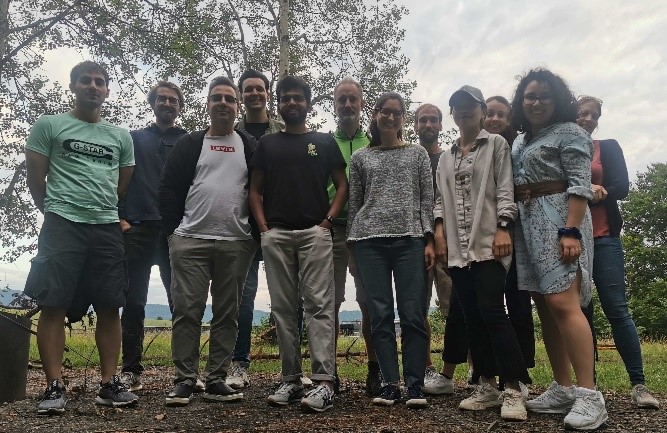
At Braunwald with some friends
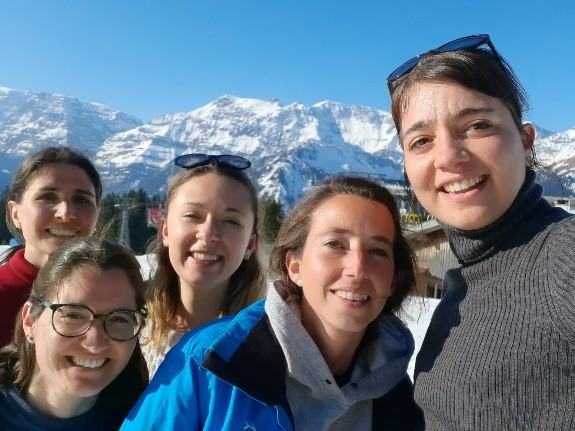
Chinese dinner with lab friends
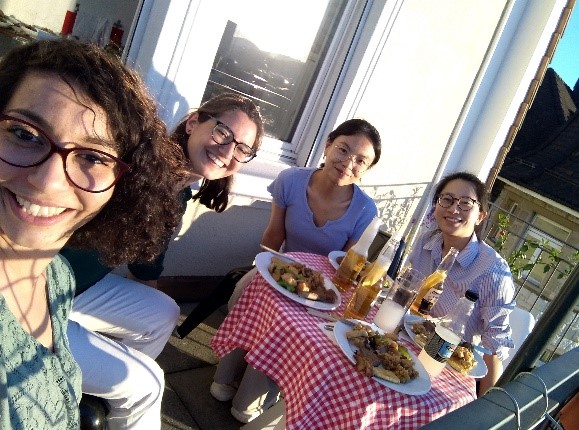
Research stay at EPFL Lausanne – Maria Pastrama
From September to December 2020, I visited the Laboratory of Biomechanical Orthopedics at EPFL. My research stay had originally been planned for March that year, but I had to postpone it at the last minute due to Covid. I was therefore very happy to able to go to EPFL and perform my experiments in September.
During my stay I performed a pilot study by filling full chondral defects created in cartilage disks with a new highly adhesive hydrogel developed at EPFL (PEGDMA reinforced with nanofibrillated cellulose) seeded with chondrocytes. The aim was to assess initial implant performance and integration with native cartilage during static culture, by investigating cell viability, matrix component production, and hydrogel-native tissue integration. The results of the study showed that cell viability was maintained over the culture period and cells produced good quantities of matrix components (glycosaminoglycans and collagen). Preliminary results from histology indicated that the gel mostly remained attached to the tissue after 28 days of culture. The hydrogel thus proved to be promising for future longitudinal studies at TU Eindhoven, in which integration with native tissues will be investigated by testing the cartilage/hydrogel interface strength in an indentation/ultrasound imaging setup.
After long hours in the lab, evenings and weekends were of course reserved for exploring the beautiful city of Lausanne and the amazing Swiss mountains, along with indulging in fondue and chocolate.
This research stay was a great scientific experience and I enjoyed getting acquainted with another prestigious European university and working in a new research group. I gained a lot of new lab skills and consolidated my existing ones, made new friends, and got to hike every weekend in the beautiful Swiss Alps.
Sample preparation: from bovine condylar cartilage to hydrogel-filled chondral samples.
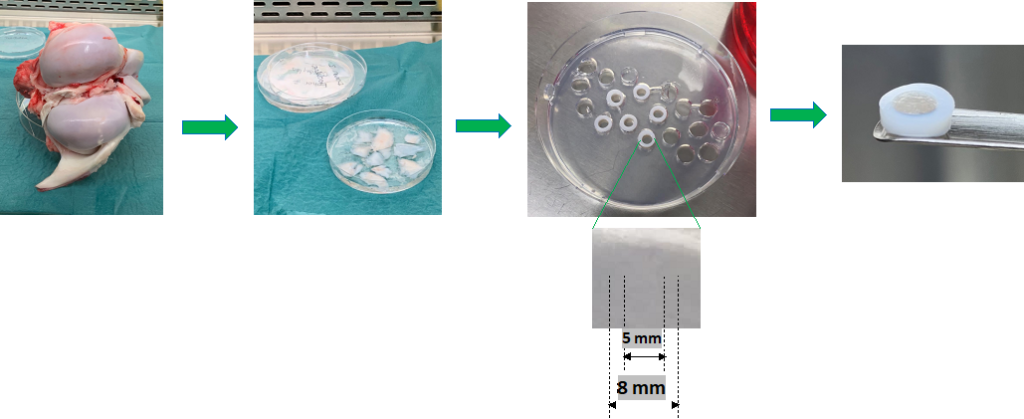
Every season is hiking season in Switzerland.
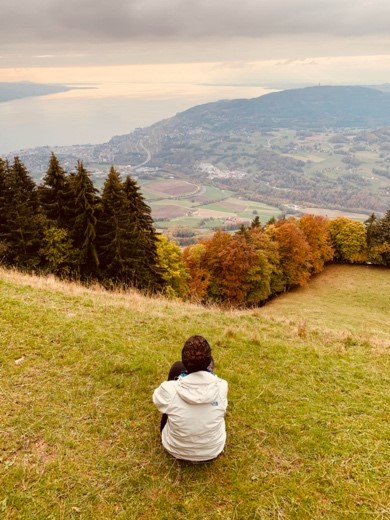
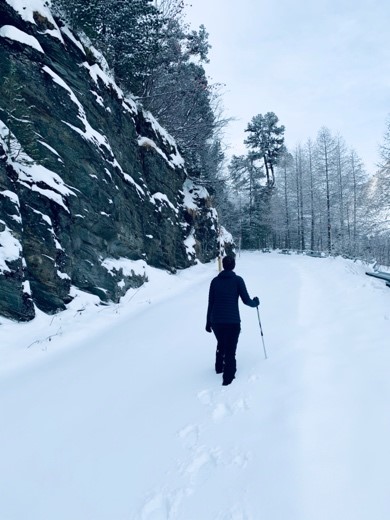
New ESB student committee members
We would very much like to welcome the following members to the ESB student committee:
Alexandra Tits
Filippo Bertozzi
Laura Lafuente Gracia
Ingmar Fleps
Gianluca Santesarti
Andrada Pica
Chiara Dazzi
More information on their research topic and background can be found here: https://esbiomech.org/student-section/student-committee/
We would also like to thank Ehsan Soodmand for continuing as a student committe member. Together, we will help organize the ESB webinars, organize the social events at the ESB conferences and keep up the ESB social media. If you have any ideas, questions, feel free to reach out to them!
The start of many new student committee members unfortunately goes hand in hand with many members leaving…. We would like to say a very very very big thank you to:
Matteo Zago
Gabriele Nasello
Edoardo Borgiani
Laura Baumgartner
Miguel Ariza
Rodrigo Romarowski
On top of their PhD and/or postdoctoral research, they have contributed a lot of time and effort to the society, and this for many years. Thank you very much and we wish you all the best for the next steps in your careers.

Social Networks
Don’t forget to check our social networks where we post the latest news and job offers:
-Facebook (https://www.facebook.com/groups/ESBiomech/)
-Facebook students (https://www.facebook.com/groups/ESBiomech.Students/),
-LinkedIn (https://www.linkedin.com/groups/4257919)
-Twitter (https://twitter.com/ESBiomech)
Contact us (https://esbiomech.org/student-section/) if you have any job to be advertised.
Aurélie Carlier, Chair of ESB Education and Student Committee







